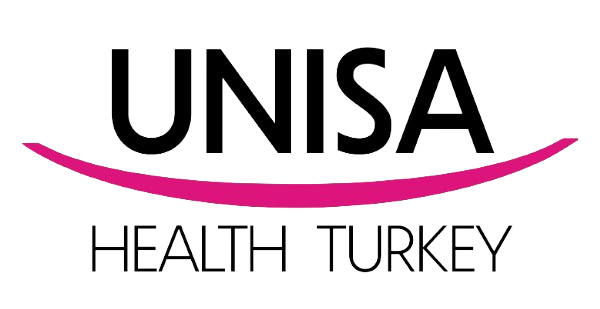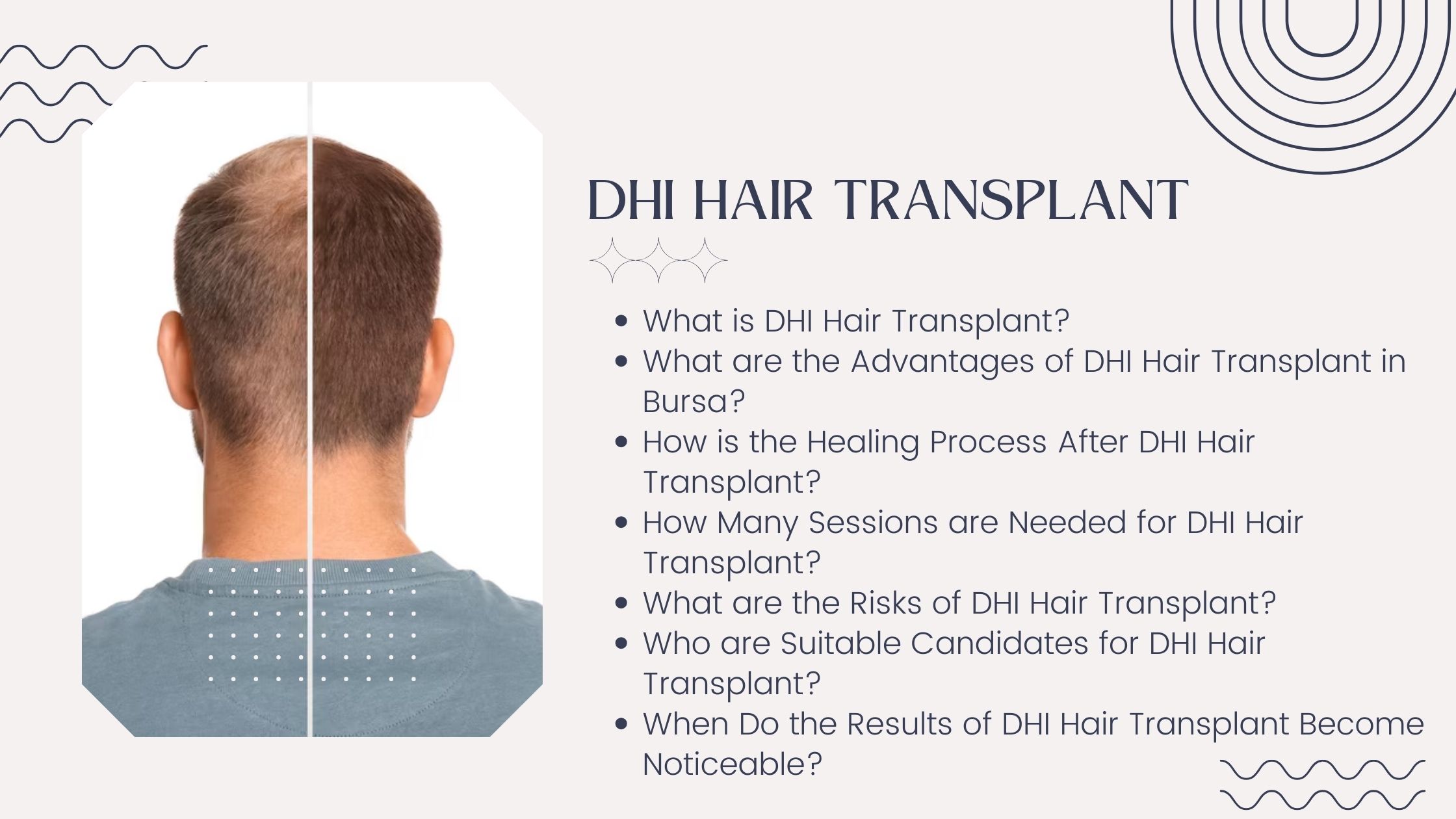Hello,
How Can We Help You?
Contact Form
Fill in the form and we will contact you as quickly as possible.
Contact us on Whatsapp
Scan with your camera app or click the QR code to start a conversation.


DHI (Direct Hair Implantation) is a modern technique used for hair transplantation. In this method, hair follicles placed inside a special pen are directly transferred to the implantation area. Unlike the traditional FUE method, in DHI, hair follicles are implanted directly without opening channels first.
DHI Hair Transplant is a minimally invasive procedure that ensures the hair is implanted in a natural direction and density. The procedure is performed under local anesthesia, and patients generally tolerate it well. The recovery process after DHI Hair Transplant is quick, allowing patients to return to their daily lives shortly.
This method is preferred by those looking for natural and aesthetic results in hair transplantation. However, it may not be suitable for everyone, so it is important to consult a specialist doctor for DHI Hair Transplant.

DHI hair transplant offers many advantages over traditional methods. In this method, hair follicles are individually extracted and directly implanted into the target area. The DHI technique is performed using micro motors and special tips. The difference from other methods is that it allows for faster and more direct implantation of hair follicles. With DHI, a minimally invasive approach is adopted, which accelerates the healing process and reduces post-operative pain. Additionally, DHI hair transplant provides more natural results as the hair follicles are less damaged during implantation. This method also makes it easier to implant hair at the desired natural angle and direction. Compared to the classical FUE technique, DHI hair transplant is a more effective and comfortable option. This method, chosen by those experiencing hair loss, offers permanent and natural results. In conclusion, DHI hair transplant is a modern method that provides a more comfortable, effective, and natural solution for those experiencing hair loss.
The healing process after DHI hair transplant is generally quick and smooth. Mild discomfort may be felt in the first few days after the operation, but pain is usually minimal. Symptoms like crusting and redness within the first 24-48 hours are normal. You can alleviate discomfort and reduce the risk of infection by using the medications recommended by your doctor. Crusting in the DHI hair transplant area usually disappears within 1-2 weeks, and the hair follicles begin to settle. Following your doctor's advice is important to accelerate the healing process.
In the first few days after DHI hair transplant, there may be redness and sensitivity in the scalp. These symptoms decrease over time and usually disappear completely within a few weeks. Following your doctor's instructions regarding washing and skin care in the first 2-3 weeks after hair transplantation is important. Although your hair is not expected to fully grow within the first few months, new hair will start to grow in the transplanted areas. Typically, results become noticeable within 6-12 months after DHI hair transplant, allowing you to achieve natural-looking hair. With careful attention to the healing process, DHI hair transplant can result in permanent and aesthetically pleasing outcomes.
The DHI hair transplant procedure is usually completed in a single session. However, depending on the degree of hair loss, the size of the area to be transplanted, and the individual's hair characteristics, multiple sessions may be required. In cases with larger hair areas or those requiring dense implantation, multiple sessions may be performed.
In the DHI hair transplant method, since hair follicles are individually extracted and directly implanted into the target area, the procedure may take a bit longer. Therefore, in some cases, the implantation process may be carried out over several days or at certain intervals. However, due to its less invasive nature and quick recovery process, DHI hair transplant is a preferred method.
The number of sessions required for hair transplantation is determined based on the patient's hair condition and the doctor's evaluation. Your doctor will determine the appropriate treatment plan and the number of sessions after an examination. DHI hair transplant, with its modern techniques and special equipment, provides patients with natural and permanent results.

Like any surgical procedure, DHI hair transplant may carry certain risks. Common risks include infection, bleeding, or allergic reactions. Temporary swelling, redness, or sensitivity may also occur in the treated area. Additionally, rare conditions such as undesired growth of hair follicles (folliculitis), scarring in the donor area, or continued hair loss may occur in some patients. Complications may arise during the post-operative healing process. Therefore, a detailed evaluation should be conducted before hair transplantation, and the recommendations of the specialist performing the procedure should be carefully followed. If you have any concerns or questions, it is important to consult your doctor. Although DHI hair transplant is generally a safe procedure, being aware of possible risks and taking proper precautions is important.
DHI hair transplant is usually a suitable option for individuals experiencing hair loss and looking for a permanent solution for their hair. Ideal candidates include those with male pattern baldness or female pattern hair loss due to genetic factors. Candidates may be suitable for DHI hair transplant if their hair follicles are strong enough and there is a sufficient amount of hair in the donor area.
Additionally, suitable candidates for DHI hair transplant are those in good general health. Individuals with chronic illnesses or serious medical conditions, women who are pregnant or breastfeeding, those with active infections, or those with specific blood clotting issues may not be recommended for this procedure. As each candidate's situation is different, it is important to consult a hair transplant specialist to determine if they are suitable for DHI hair transplant.
The DHI hair transplant procedure can be an effective solution for individuals looking for permanent and natural results, who are suitable for surgery, and who carefully follow the doctor's recommendations before the procedure. Suitable candidates can achieve successful results by paying attention to the healing process after the procedure.
The results of DHI hair transplant usually become noticeable over time, and this process can vary from person to person. Symptoms like crusting and redness may be seen in the implanted area within the first few weeks after the procedure. During this period, hair follicles begin to settle, and new hair starts to grow. However, it may take some time for the hair to fully grow and for the results to become clearly visible.
Typically, DHI hair transplant results start to become noticeable within 6-12 months. In the early months, the newly implanted hair may be sparse and less noticeable. However, as the hair follicles fully settle and the hair grows, a fuller and more natural appearance will emerge. As the healing process can vary from person to person, it is important to be patient and follow your doctor's recommendations.
Full results may take 12-18 months to appear. During this time, it is important to wait for your hair to grow naturally and become denser. The results of DHI hair transplant are usually permanent, allowing you to achieve natural-looking hair. By following your doctor's instructions and attending regular check-ups, you can monitor the progress of the results and achieve a successful DHI hair transplant outcome.
Contact Form
Fill in the form and we will contact you as quickly as possible.
Contact us on Whatsapp
Scan with your camera app or click the QR code to start a conversation.